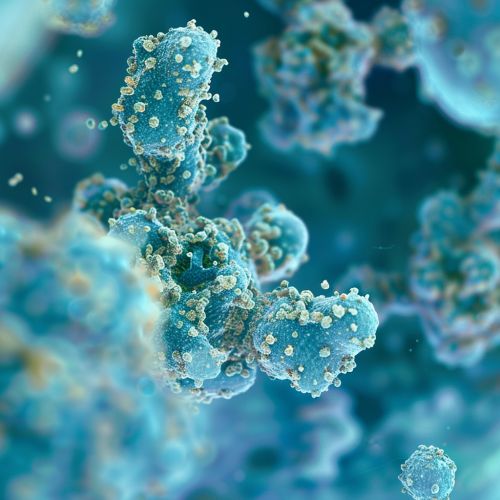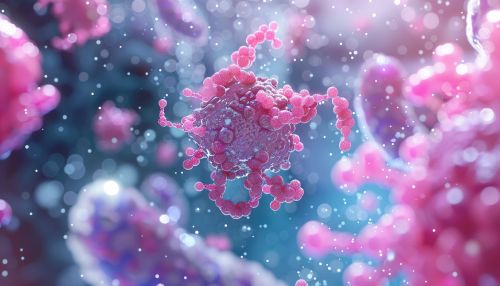Arginine:glycine amidinotransferase
Biochemistry
Arginine:glycine amidinotransferase (AGAT) is an enzyme that plays a crucial role in the creatine biosynthesis pathway. It is encoded by the GATM gene in humans and catalyzes the transfer of an amidino group from arginine to glycine, forming ornithine and guanidinoacetate, the immediate precursor of creatine.


Structure
The AGAT enzyme is a dimeric protein, meaning it consists of two identical subunits. Each subunit contains a catalytic domain and an N-terminal domain, which are connected by a flexible linker region. The catalytic domain is responsible for the enzyme's activity, while the N-terminal domain plays a role in substrate binding.
Function
The primary function of AGAT is to initiate the synthesis of creatine, an essential molecule that helps supply energy to all cells in the body, particularly muscle cells. It does this by catalyzing the first of two steps in the creatine synthesis pathway. This process is critical for maintaining energy homeostasis in tissues with high-energy demands, such as the brain and skeletal muscle.
Clinical significance
Mutations in the GATM gene that encodes AGAT can lead to AGAT deficiency, a rare metabolic disorder characterized by creatine deficiency in the brain. This can result in a variety of neurological symptoms, including intellectual disability, speech delay, and seizures.
Research
Research into AGAT and its role in creatine synthesis has potential implications for a variety of health conditions, including muscle disorders, neurodegenerative diseases, and certain types of cancer. Understanding the function and regulation of this enzyme could lead to new therapeutic strategies for these conditions.
